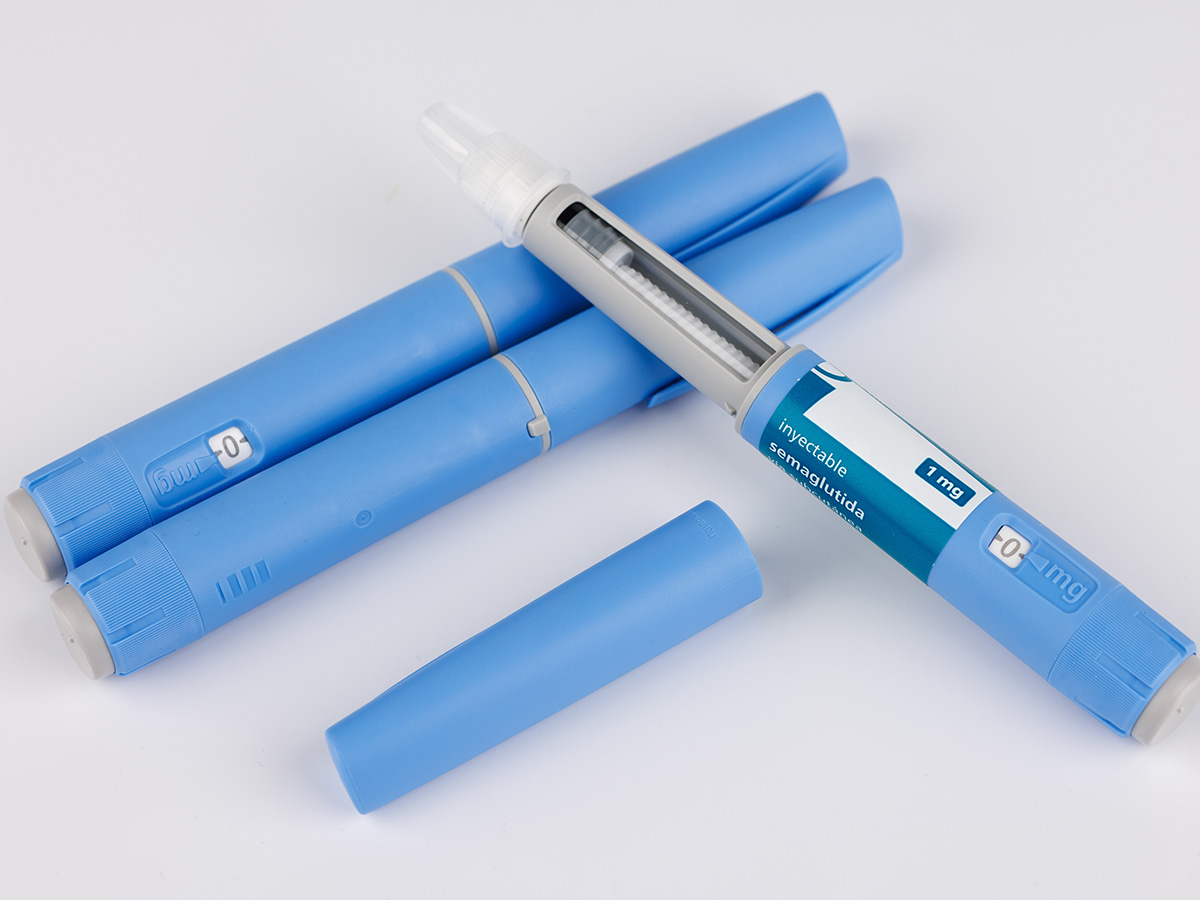
A study published in the Journal of Medical Toxicology by researchers at the University of Alabama at Birmingham found that reports of overdoses of popular injectable weight-loss medications to a regional poison control center have increased substantially over the last few years. Researchers attribute this rise in exposures to increases in prescriptions for these medications and an increase in therapeutic errors.
The use of glucagon-like peptide-1 receptor agonists, also known as GLP-1 RAs, has increased over the last decade for glycemic control in Type 2 diabetes, cardiovascular protection and weight loss. Studies show a 221 percent increase in GLP-1 RA prescriptions from 2016 to 2021. While prescriptions for these medications are increasing, so has the number of compounded products being produced to keep up with high demand. Compounded drugs typically consist of medications that have been mixed by a licensed pharmacist tailored to an individual patient’s needs.
“Compounded drugs are not FDA-approved, meaning that the safety and quality of these products are not regulated by the FDA,” said Stacy Marshall, M.D., a medical toxicologist at the Alabama Poison Information Center and a researcher involved in the UAB-led study.
 Researchers attribute this rise in exposures to an increase in prescriptions for these medications and an increase in therapeutic errors.The rise in compounded products increases the risk of therapeutic errors due to different concentrations, different dosage amounts for each medication and a lack of instruction on proper use. These therapeutic errors may lead to an increase in calls to poison control centers and emergency department visits related to medication errors nationwide.
Researchers attribute this rise in exposures to an increase in prescriptions for these medications and an increase in therapeutic errors.The rise in compounded products increases the risk of therapeutic errors due to different concentrations, different dosage amounts for each medication and a lack of instruction on proper use. These therapeutic errors may lead to an increase in calls to poison control centers and emergency department visits related to medication errors nationwide.
“Given that the majority of exposures were related to therapeutic errors and confusion surrounding how to use the pen that administers the subcutaneous injection, we recommend that health care providers offer patients more extensive education on pen usage,” said Marshall, an assistant professor in the UAB Department of Emergency Medicine.
Between 2017 and 2022, there were 5,713 single-substance exposure cases reported to U.S. poison centers involving a GLP-1 RA. The UAB study shows that 91 percent of exposures are due to mistakes that happen when patients are administering the treatments on themselves, with 21 percent of those exposures related to errors on initial use of the pen. Some of the most common therapeutic errors involved patients’ taking doses too early due to perceived pen malfunctions, confusion surrounding daily versus weekly doses, incorrect amounts drawn from multi-dose vials or patients’ forgetting previous doses.
“Due to the number of therapeutic errors that have occurred with these medications, we recommend patients talk with a pharmacist or a health care provider about how to use the pen appropriately,” Marshall said. “Additionally, these medications are often dosed weekly, rather than daily. Developing a system to remember when to take it each week may also help reduce the risk of errors in dosing.”
While most patients who had GLP-1 RA overdose reported no symptoms, gastrointestinal symptoms such as nausea, vomiting, generalized weakness and abdominal pain are some of the most common when symptoms occur. Rarely patients may develop low blood sugar, but this is not common with therapeutic errors. While consequences of GLP-1 RA overdose tend to be mild, UAB experts say it is important to know the symptoms of an exposure and report their exposure to the APIC at 1-800-222-1222. The APIC is available 24/7, 365 days a year to provide poison advice for all ages.
“This research brings light to the fact that therapeutic errors surrounding drug administration are common,” Marshall said. “More education should be given to patients to try to prevent errors, especially considering injectable administration and weekly dosing may be new to many.”
To read the full study, click here.